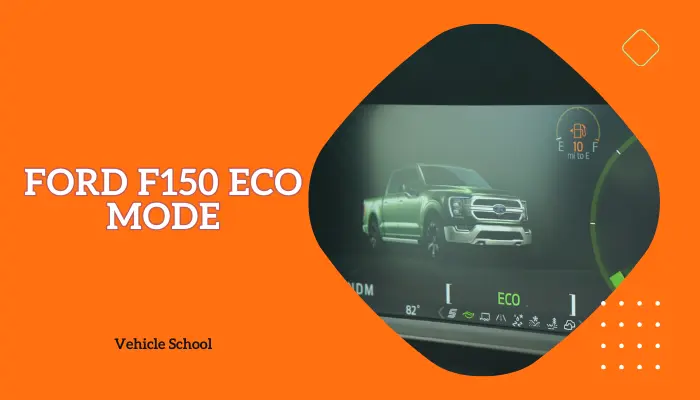Heated seats make winter drives in your F150 so much better, right? They’re super handy until they’re not. It’s common to have the seat heat not working.
My 2020 F150 Lariat had this problem too, so here’s what I did to solve it, Keep reading to learn all the details.
What Causes Your F150’s Heated Seats To Stop Working?
If your F150’s heated seats aren’t working, it’s due to broken wires, faulty parts like TEDs or the temperature sensor, burnt connections in the seat heater control module, or blown fuses. To fix it, you need to change the heater element, TED modules, check the sensor and connections, and inspect or change fuses if needed.
I’ll tell you all about these fixes, but let’s clear out the root causes first.

1. Seat Heater Pad Broke
If your F150’s seats only do heating and have stopped working, it could be due to frequent use, sharp damage, or manufacturing defects causing weak spots in wiring.
A wire within serves as the primary heating element, and when it breaks, heat generation ceases, causing electricity flow disruption and cold seats.
This issue can be confirmed using a multimeter, indicating increased resistance if wires are broken.
2. Faulty Thermo-Electric Devices
F150 trucks with seats that both heat and cool utilize Thermo-Electric Devices (TEDs) instead of standard cushion elements.
These TEDs feature a coil that cools or heats when voltage is applied in different directions, aided by a small fan to circulate air for comfort.
Over time, TEDs may deteriorate, particularly the coils, or develop faults due to issues like duct splits or wiring problems.
Items stored under the seat may also cause overheating and damage TEDs. Symptoms of TED failure include a strong fan with no heat or rapid shutdown after activation.
3. Bad Temperature Sensor
The temperature sensor in the F150’s driver’s seat can encounter problems due to high-temperature changes or water ingress, affecting its accuracy.
The heated seat function won’t work properly or fail altogether, disrupting temperature control and the system’s ability to regulate seat temperature by adjusting the electric current to the seat heater.
4. Faulty Connection In Seat Heater Control Module
If heated seats stop working in your F150, a burnt connection in the SCME (Front Seat Climate Control Module E) may be the cause, particularly the ground wire connection (Pin-M in connector C3265A).
Insufficient grounding leads to increased resistance in the circuit, causing excessive heat at the connection spot.
This heat can melt the heated seat connector housing, disrupting power flow and resulting in heated seat malfunction.
5. Heated Seat Fuses Blown
The heated seat fuses might also burn out or short circuit because of a busted seat heater, water getting in and causing a short, or messed-up wiring.
When this happens, the seats won’t warm up until you change the fuse. Sometimes, this can come with all the other issues I mentioned earlier, so it’s good to have the fix for this as a last resort.
How To Get Your F150 Seat Heater To Work Again?
Now, here’s everything you can do to fix your Seat Problem.
Before diving into the hands-on fixes, take a peek at your F150’s fuse boxes. They house the fuses and relays for the heated seats, but their locations vary by year. Just double-check to make sure nothing’s shorted out.
1. Do A Heated Seat Element Replacement
The part number for this is JL3Z-14D696-H. It should be the same across all modern models, I’ve had it in my own F150.
- Pry down covers at the front and back of the seat to expose bolts.
- Use a 13 mm wrench to remove four seat bolts.
- Lean the seat back for plug access.
- Disconnect large and small plugs.
- Pry off the push pin connector holding the wiring harness.
- Remove the T25 Torx bolts on the switch plate, then remove the plate.
- Remove the elastic bands and unplug the yellow connector.
- Release the blue rods from the orange clips around the seat cover.
- Work the seat cover off by pulling around the cushion.
- Gently pry off the old heating element.
- Disconnect the wire, feed up through the seat back.
- Line up new heating element, tape to seat pad.
- Tuck element into cracks and attach blue rods into clips.
- Work seat cover around seat foam, attaching rear clips.
- Reinstall the side panel, seat bolts, and electrical connectors.
Once everything is done, give the heating a try. This replacement should also help out if you had a bad temperature sensor instead, which comes included in the cushion.
If you need help working things along, you can reference this video:
2. Swap Out Thermo-Electric Devices
- Take off the seat caps with two 13-mm bolts on each side.
- Move the seat forward to reach the bolts in the back, then unscrew them.
- Disconnect all the plugs from the seat.
- Lift the seat out of the truck and place it on a table or cart.
- Unclip the straps and unzip the seat cover to get to the TED modules.
- Unhook the clips and screws holding the modules in place.
- Swap the old TED modules for new ones, securing them with screws and clips.
- Plug everything back into the seat.
- Put the seat back in the truck, making sure everything is connected.
- Tighten the bolts that hold the seat frame, using lock tight if you have it.
- Clear any error codes and test the system with the truck running.
- Check the fuses (fuse 28 and Q17) to make sure they’re okay.
- Test the heated seats to make sure they’re working.
3. Fix The Burnt Connection
- Disconnect the positive battery terminal.
- Find the SCME module under the front passenger seat.
- Remove the smaller (C3265B and C3265C) connectors.
- Remove the larger (C3265A) connector.
- Check the C3265A connector for damage, especially the BL-BU ground wire.
- Clean any residue from the SCME module.
- Open the SCME module to access the PCB.
- Clean and check the damaged PCB pin for continuity.
- Use a small soldering iron to fix damaged connections on the PCB.
- Put the PCB back into the SCME module housing.
- Disassemble the C3265A connector if replacing it.
- Strip wire insulation and prepare the terminal for crimping.
- Crimp the terminal securely.
- Reassemble the connector with the SLC and terminals.
- Slide the SCME module back under the seat.
- Reconnect all other connectors, and reattach the positive battery terminal.
FAQs
How much does it cost to replace a heated seat element?
Just $35–$40 if you do the thing yourself. If you get it done from a mechanic, though, you might have to pay almost $200 for both the labor and the part.
Final Thoughts
Once you’ve wrapped up all the fixes, you should have your comfortable seats back and be ready to face the cold head-on again.
These heating and cooling issues are common in plenty of F150s but are fairly easy to fix.
And remember to keep the ventilation under the seats clear and don’t put stuff with sharp edges on your seats, and you should be fine.






